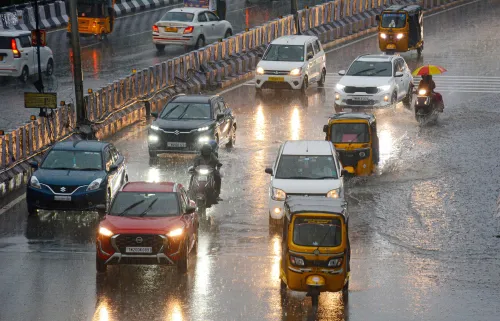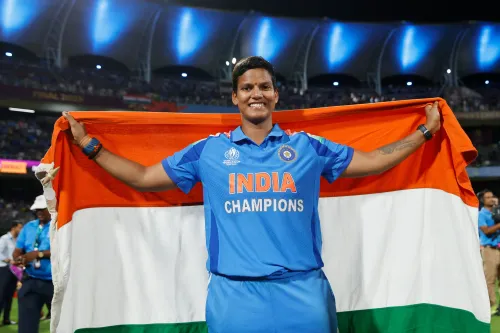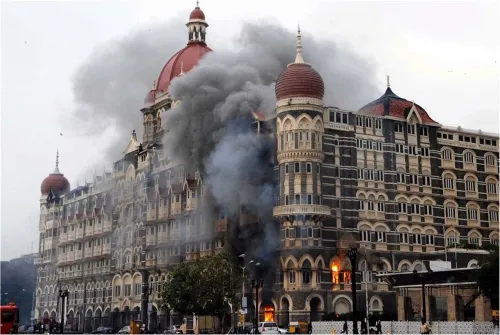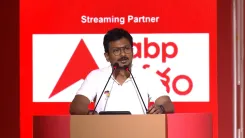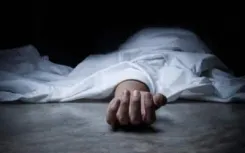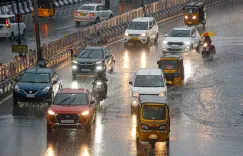Do Sculptors of Ayodhya’s Ram Temple Really See PM Modi as an ‘Incarnation of Lord Ram’?
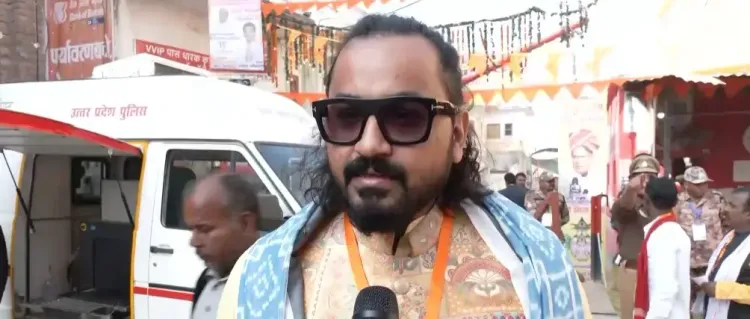
Synopsis
Key Takeaways
- The artisans describe PM Modi as an incarnation of Lord Ram.
- Around 30 idols were created for the temple.
- The flag-hoisting ceremony signifies the completion of the Ram Temple.
- Emotional significance is paramount for the sculptors involved.
- The temple honors various deities pivotal in Hindu mythology.
Ayodhya, Nov 25 (NationPress) In anticipation of the flag-hoisting ceremony at the Ram Temple in Ayodhya, the artisans who meticulously crafted the temple's idols have expressed profound gratitude and admiration, referring to Prime Minister Narendra Modi as an “incarnation of Lord Ram” due to his pivotal role in the Ram Mandir movement.
Prashant Pandey, a leading sculptor involved in creating approximately 30 idols for the temple, shared insights about the extensive efforts of his team and the importance of the Prime Minister's visit.
In a conversation with IANS, sculptor Prashant Pandey remarked, “We have crafted around 30 idols for the temple. I am one of the three sculptors who carved Ramlala and personally created the Shwet, Gaja Dwar, Singh Dwar, Garud Dwar, Hanuman Dwar, and the main Ganesh Ji idol (Ganesh Pol). Inside the Garbhagriha, we placed Ganesh Ji and Hanuman Ji, with the Jai-Vijay panels positioned outside.
“The Ram Darbar is located on the first floor. In the Parkota area, I sculpted idols of Ganesh Ji, Hanuman Ji, Surya Bhagwan, Maa Bhagwati, Durga Maa, Annapurna Maa, and the Sapt Rishi. At the Sapt Mandap, we installed idols of Rishi Valmiki, Maharishi Vashistha, Vishwamitra, Shabari Maa, Ahilya Maa, and Nishad Raj. All of these were crafted by Pandey Murti Bhandar in Jaipur.”
Reflecting on the Prime Minister's imminent flag-hoisting at the temple's shikhar, Prashant Pandey expressed, “To us, he embodies an incarnation of Lord Ram, undertaking remarkable work for Sanatan Dharma, our religion, and the nation's progress — whether in development or any other form of advancement. I will forever be thankful to him.”
He noted that this day holds immense emotional value for the artisans who contributed to the temple's creation.
“Today is a momentous occasion. The Prime Minister is present, and the sacred flag is being hoisted. This is our greatest triumph. It is a blessing for our family to have played a role, however small, in the Ram Janmabhoomi. There is no greater fortune than this.”
Another sculptor, Satya Narayan Pandey, shared that the idol-making journey was filled with divine experiences.
“When the Lord manifests, it brings about a unique divine presence that is beyond words. The idols we created are miraculous. For the first time, Lord Ram emerged from a single stone in a sky-colored form, while Goddess Sita appeared with a luminous complexion from the same stone. This is indeed divine grace. When the Lord manifests, such miracles are natural,” he stated.
Earlier that day, Prime Minister Narendra Modi received a warm welcome as he arrived in Ayodhya for the eagerly awaited 'Dhwajarohan Utsav', the flag-hoisting ceremony at the Ram Janmabhoomi Temple.
Chief Minister Yogi Adityanath greeted him at the Saket College helipad, and the Prime Minister then proceeded towards the temple complex, leading a lively roadshow.
People gathered along the route in large numbers, waving the Tricolour, BJP flags, and flags adorned with symbols of Lord Ram, while chants of “Jai Shree Ram” and “Modi-Modi” reverberated throughout the city.
Individuals showered flower petals on the Prime Minister's convoy as it made its way from Saket College to the Ram Janmabhoomi Temple, reflecting the excitement surrounding this historic event.
During his visit, PM Modi also offered prayers at the Sapt Mandir situated within the expansive Ram Temple complex.
These seven temples honor Maharishi Vashistha, Maharishi Vishwamitra, Maharishi Agastya, Maharishi Valmiki, Goddess Ahalya, Nishadraj Guha, and Mata Shabari.
The Sapt Mandirs symbolize the esteemed gurus, devotees, and companions who played crucial roles in Lord Rama's life, highlighting their enduring significance within the complex.
Later, at around 12:00 p.m., the Prime Minister will participate in the flag-hoisting ceremony, officially marking the completion of the Ram Temple's construction. This ceremony carries deep cultural and spiritual meaning for devotees across the nation.


